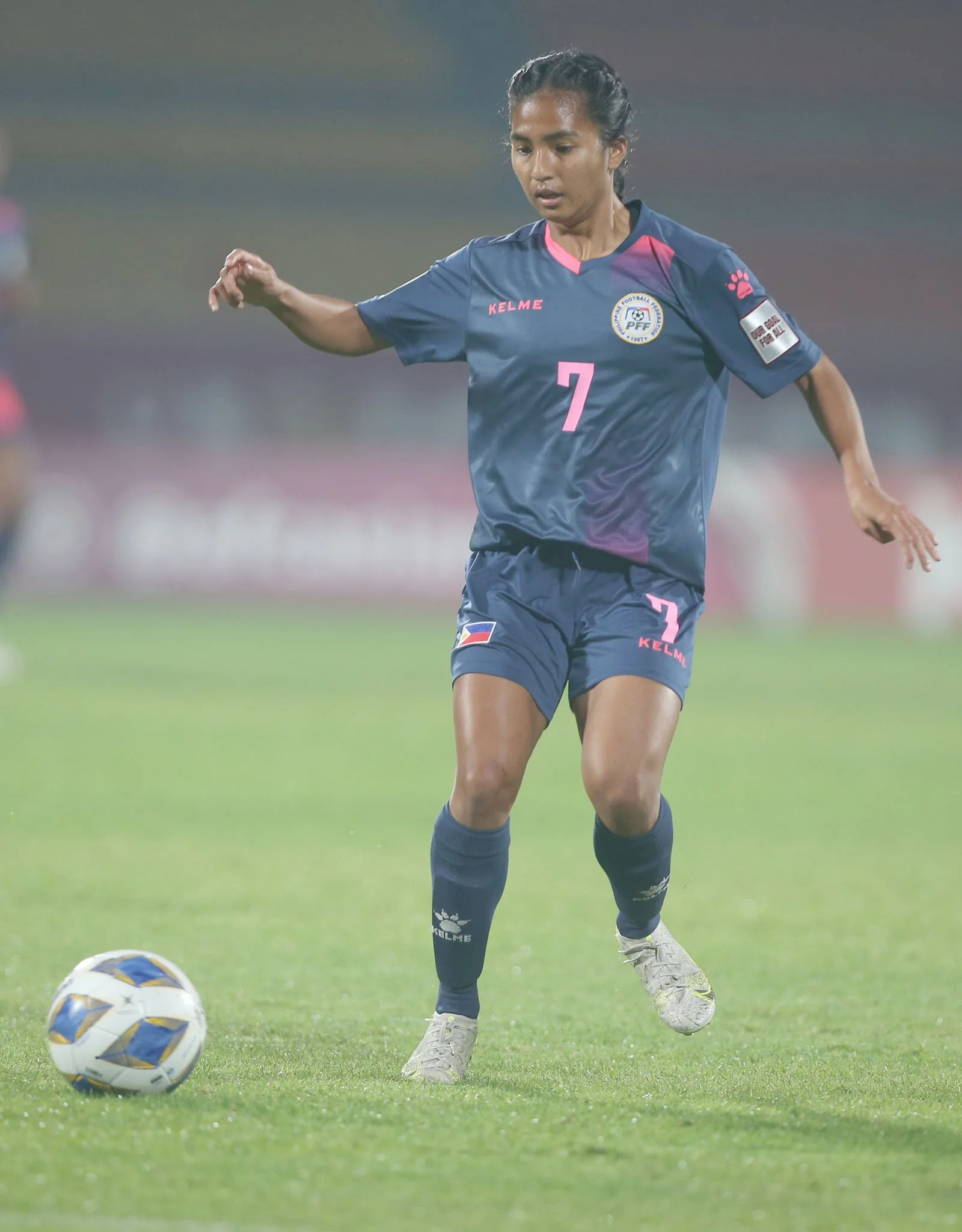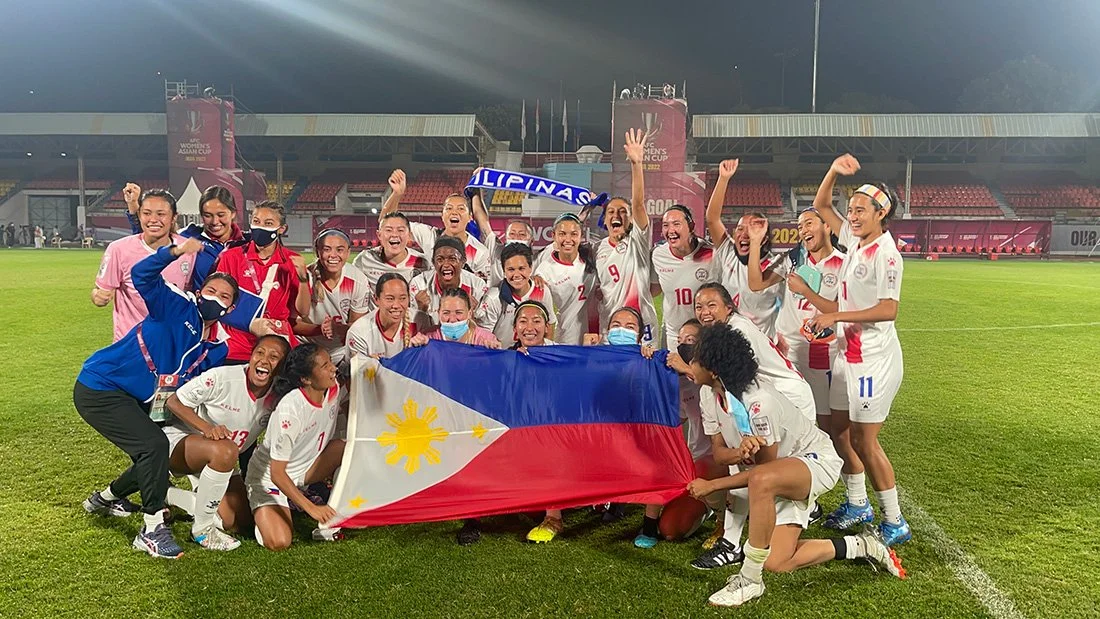Women Who Kick Aspiration
/Philippine National Women’s Soccer Team winning the ASEAN Football Federation Championship (Source: Twitter)
I expected more of the rah-rah-rah atmosphere when my friend Khalil picked me up by the entrance. He led me quickly to a seat beside him at the bleachers. Next to him were his girlfriend, Lovely, and his parents, all of them football fanatics. Khalil played in his school team when he was a teenager. His father is a native of Iloilo, the province that has bred a good number of the country’s best players. I was a newbie fan, sustained merely by my devotion to watching the World Cup on television every four years.
But why weren’t we rousing the country to show pride when there we were, on home ground, and our girls had made it to the finals? Weren’t they on their way to achieving something historic? In fact, wasn’t it so cool that this very team, which was about to make a name for itself tonight, made it to the qualification round for the women’s World Cup set for next year in Australia and New Zealand?
The ASEAN Football Federation (AFF) plays teams from among Southeast Asian countries where football is becoming the sport to watch, save here, in the Philippines, where people seem to only have a latent fondness for the game. On my side of the bleachers (which had a makeshift table for our food boxes), a drumbeater played the fiesta beat, and that’s about it to get our heart racing for tonight’s event.
In the first 20 minutes of the first half – 45 minutes plus a three-minute extension – the Filipinas scored two goals, one after the other. Two goals! That’s almost a milestone, and we roared. We jumped out of our seats and yelled eh-yo, eh-yo the way I had heard fans on television get the anthem going in critical moments of the game. Isa pa, isa pa, others cheered in Tagalog. One more, one more goal.
The sprightliness of the Filipinas put the Thais off-guard, and from watching the action on the field, it seemed the Thais were constantly on the defensive. The goals were initiated from corner kicks – a player had told me this was a strategy that goes with a “set piece.” Whatever that means, the Filipinas were making the Thais desperate when the latter’s higher ranking should have made it the other way around.
Re-branding
The Filipinas didn’t have much of a history. The Philippine team has been around since the 1980s; then, they were called the Malditas, a playful Visayan term for girls who would put up a fight. That name was changed in the rebranding of the team, which began the steady build-up of their fighting spirit just as recently as late last year. The pandemic had reduced them to Zoom practices, but by August they had to train for tryouts in preparation for the Asian Cup the following month.
The players went to camp at a “great park” in Irvine, California, combining a mix of the mainstays and new recruits, eventually training as one team for the games in Tashkent, Uzbekistan. At first they thought they were going to lose against Nepal, which has a much lower ranking; but nearing the end of the second half, the Philippines scored one-all and scored again in the next three minutes, finally beating Nepal.
Next, they had to beat Hong Kong, also lower in ranking in that particular grouping, to qualify for the cup. Same thing happened: there was an equal score of one goal each during the second half and, sure enough, the Philippines scored one more goal in the last ten minutes. One of the players, Camille Rodriguez, recounted to me the pace of excitement and how the team reached the turning point. (Camille’s father is a football coach whose family is friends with ours when we were growing up in the southern city of Zamboanga.)
Camille Rodriguez (Source: Tempo)
The “stars aligned,” she said, when the team hired Australian coach Alen Stajcic, who had been dismissed from his own home team. Stajcic trained the girls in their second camp in Irvine for three months starting in November, when they spent the Christmas holidays in AirBnbs to be ready for the Asian Cup finals in February 2022. In Navi Mumbai, India, they made it to the quarter finals.
The most nerve-wracking game was against Taiwan, a long-drawn out fight that wound up in a “sudden death” – when both teams are tied and game time is over (90 minutes in total for two halves). The winner is determined through penalty kicks. The Philippines scored the first goal in the first half. Taiwan had come from behind to score a goal in the last ten minutes of the second half. The game had been extended to 30 more minutes, but neither scored.
Now each team had five players doing a penalty kick. They evened out again: 3-3. The fourth Philippine player missed. The fourth Taiwanese player scored. The fifth Philippine player scored. The fifth Taiwanese player missed. Another draw. It was the Philippine team’s turn to kick, and goal!
The Philippines qualify for the 2023 Women’s World Cup after beating Taiwan in the quarterfinals of the 2022 Asian Football Confederation (AFC) Women’s Asian Cup last January. (Photo by Camille Rodriguez / PWNT)
On to the Finals
But at the semi-finals, they were up against a stronger and heftier team, the South Koreans, to whom Filipinas lost 0-2. Yet, they did not lose heart, putting their sights on the AFF tournament held at the Rizal Stadium in July 2022, where I was watching the finals live for the first time in my life, in my growing interest for the hometown scene of the game.
The AFF was such a turnaround for the Filipinas. Previously in May, they lost both to Vietnam and Thailand in the SEA Games, the so-called Olympics of Southeast Asia. They were able to grab the bronze medal, however, by beating Myanmar.
The Philippines beat Myanmar in the Southeast Asian Games last May (Source: Rappler)
On the last few minutes of the game’s second half, the isa pa turned to reality, the Filipinas scoring the third goal, winning 3-0 against Thailand.
As I watched the game, I was impressed by the goalie keeping her eyes tight on the ball, but I was slightly disturbed by her blond hair bobbing up and down. This may be the thorn in the side of the Filipinas, the mixed race of many of the players whose foreign lineage didn’t matter, so long as they could show a Philippine passport. At the AFF tournament, only four of the 27 players picked were “homegrown.”
Could this be how we win? By bringing in the “imports” as they do in major basketball leagues? It’s the same strategy picked up by the Azkals, the Philippine men’s football team, in what one former football federation official called a “shortcut” in lieu of training home-grown recruits.
Camille would rather see the other side of the coin, in which the vast Filipino diaspora around the globe plays a part in building a national team. For me, I would like to see our flag as huge as the one she showed me on a video of the SEA Games, where Vietnam unfurled its red star among the sea of fans, in the stadium in Hanoi that was packed with 16,000 people. The finals at the Rizal stadium had only half that crowd size. But maybe, if the Filipinas climbs up the ranks in the World Cup next year, our country can cheer its heart out.
Criselda Yabes is a writer and journalist based in Manila. Her most recent books include Crying Mountain (Penguin SEA) on the 1970s rebellion in Mindanao and Broken Islands (Ateneo de Manila University Press) set in the Visayas in the aftermath of Typhoon Haiyan.
More articles from Criselda Yabes







